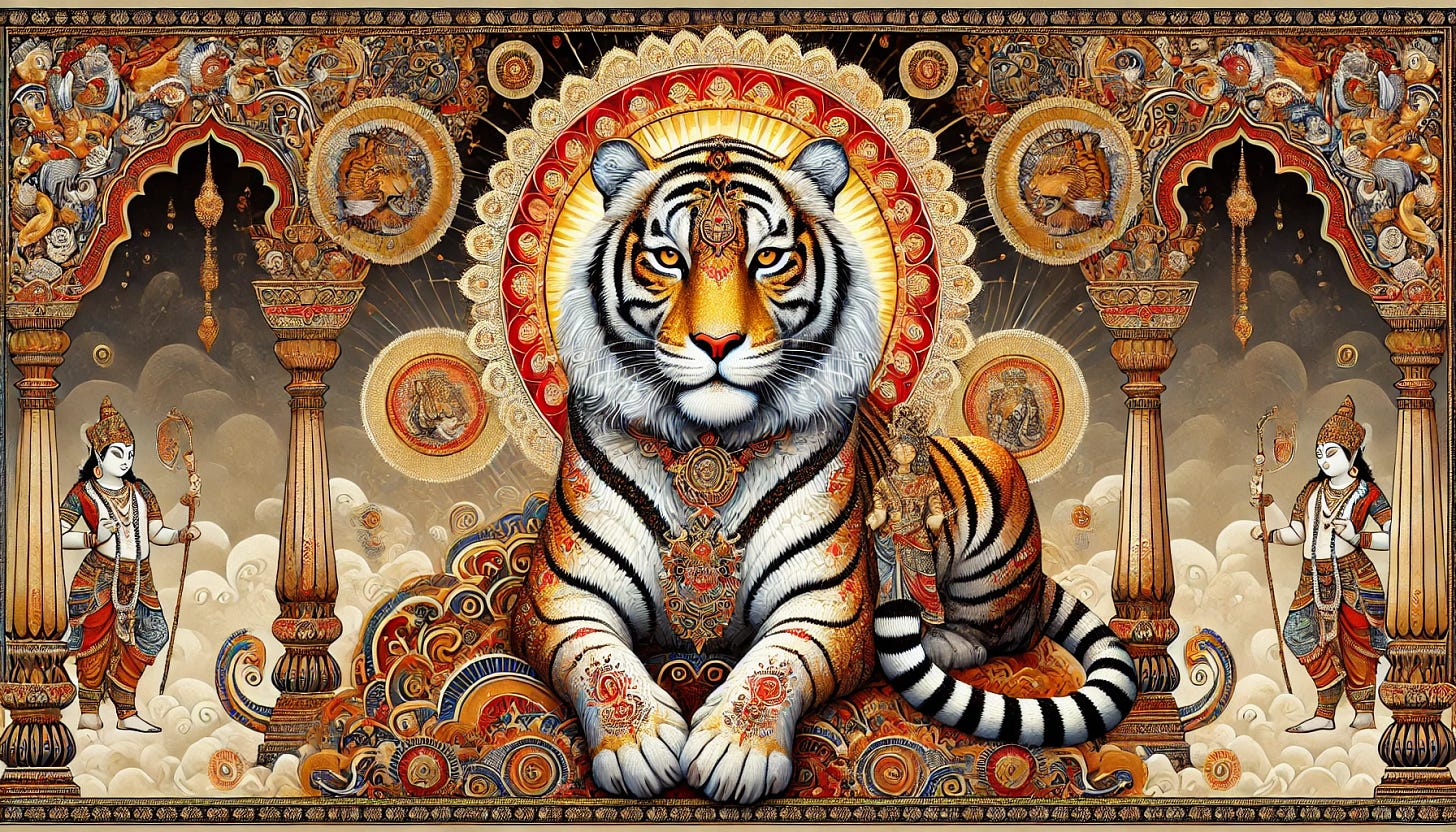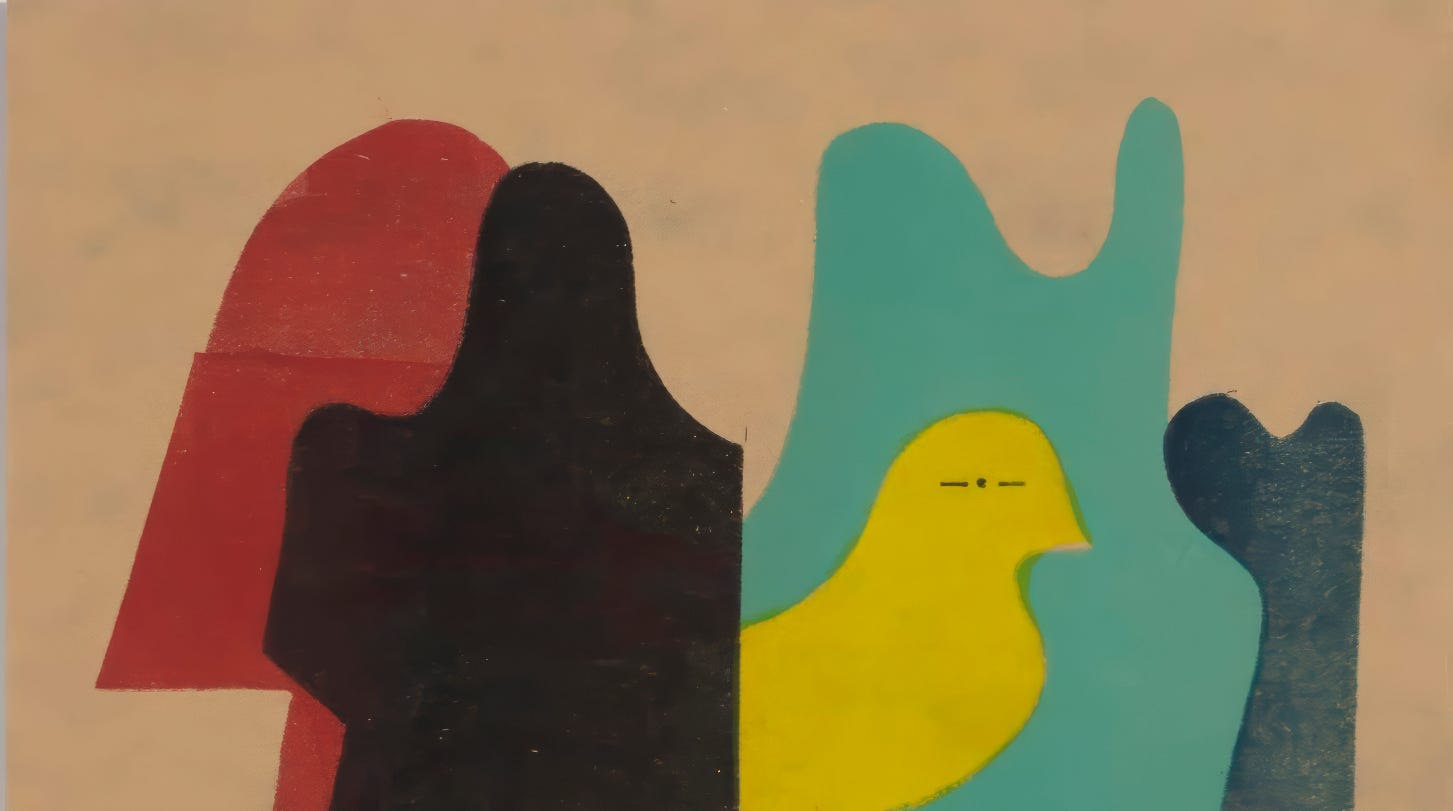Pooh-poohing a publishing poobah
New Yorker fact checkers need a fact check. Plus the chef who helped create the park service and a Dutch printer who defied the Nazis. This week's video is a little something for Christmas naughties.
ON LANGUAGE
Playing with dingalings
By Barbara Ramsey
AS A LOVER of language, I was delighted to see a recent article in the New Yorker about a man named Ganesh Devy. Mr. Devy has undertaken the truly gargantuan task of surveying the over 120 languages spoken by India’s billion and a half people.
Delighted, that is, until I read this:
Indians, for example, share a fondness for “echo words,” such as puli-guli in Tamil, where puli refers to tigers and guli is a rhyming nonsense term meaning “and the like.” This quirk occurs in South Asian languages from at least three different families but perhaps in no other language anywhere in the world.
What the hell? I’d always believed the New Yorker’s fact checkers were the very best. How could such claptrap pass muster? Claptrap, by the way, is a rhyming English noun meaning “absurd or nonsensical ideas.” Its first recorded use was in 1730 as a stage term meaning a trick to generate applause. And guess what? The word appeared later in the very same issue of the New Yorker when a different author wrote about a person who “seems to have believed in this claptrap”.
We use rhyming compounds, the common descriptor for such words in English, to describe everything from a genre of music (boogie-woogie) to the old and clueless (fuddy-duddy) to a trivial trinket (knickknack). Granted, the writer’s use of the term “echo words” is a lovely improvement over the more pedantic “rhyming compounds.” But the magazine’s ignorance of echo words in English appalled me.
In fact, six months earlier, my sister Pat and I had compiled a long list of such words. She and I share an interest in neologisms and out-of-the-way words of various kinds, so this echo-y tangent was just another day in our shared obsession. And now I planned to use that list to insure the magazine’s boo-boo would not go unchallenged. I wrote the following letter to the editor:
If you artsy-fartsy East Coast riffraff claim to be fact-checking, I suggest you rethink your loosy-goosy assertion that, except for South Asian languages, “perhaps no other language anywhere in the world” has echo words. Maybe your tighty whiteys are cutting off the circulation to your brain? In future, don’t be such dingalings.
I doubt they’ll print the letter, but writing it cheered me up, particularly since it enabled me to deploy our list of echo words. My sister and I love to take such linguistic joy rides together and the English language affords a wealth of opportunities. My native tongue, which is the only one I speak, contains words from languages as diverse as Algonquin (skunk), Mandarin (tycoon), and Old Norse (beaker). And I do believe English needs a few extra echo words. I’m envious of that “puli-guli” term for tigers and the like. How about “scary-hairy” for grizzly bears and the like?
YOSEMITE STORIES
The chef who helped create the National Park Service
FOR RENOWNED CHEF Tie Sing, things were going perfectly well until his mules fell off a cliff.
He had been the obvious choice to cook for the so-called Mather Mountain Party, a taxing twelve-day trip into the high Sierra in July 1915. Sixteen years earlier, in 1899, and during the height of anti-Chinese discrimination, the U.S. Geological Survey in the Sierra had already honored Sing’s culinary prowess by giving the name “Sing Peak” to a 10,552-foot mountain peak on the southern edge of Yosemite.
Convened by Stephen Mather to drum up support for a new National Park Service, the 1915 party of fifteen prominent businessmen, politicians, and journalists included leaders of National Geographic Society, the American Museum of Natural History, and Southern Pacific Railway. Mather, the Undersecretary of the Interior, was also a businessman who made a fortune with his 20-mule Team Borax company.
Thanks to Tie Sing, these muckety-mucks traveled in style, with sumptuous meals set with china and fine silver on white linen tablecloths that he and his assistant laundered daily. When, early in the trip, two mules tumbled off a 300-foot cliff with cooking supplies, Sing was bereft. The pots and pans were one thing. But one of the mules had carried his precious sourdough starter. The master chef made do, as always, with aplomb. He draped his biscuit dough over working mules, whose body heat helped the dough rise.
In written accounts of the excursion, praise for his meals sometimes overshadows the mountain scenery. And Mather’s gambit worked. His camping buddies turned into powerful lobbyists for a new federal agency to oversee the parks. The menus that summer helped inspire the creation of National Park Service the following year. They included a Farewell Dinner on July 28 of trout and venison, with a special dessert, a pastry that enclosed a “future fortune” for each of the Mountain Party. Mather’s read: “The sound of your laughter will fill the mountains when you are in the sky.”
Yosemite Ranger YenYen Chan has created a video of Chinese immigrant contributions to the park, including those of Tie Sing. The multimedia ebook I created for the California Historical Society exhibit, Yosemite: A Storied Landscape, is a free download in Apple Books.
FOR THE LOVE OF TYPE
A Dutch master in wartime
DURING THE OCCUPATION of the Netherlands in WWII, a group of artists and writers founded an underground publication entitled De Blauwe Schuit (The Blue Barge), a reference to a medieval Dutch allegory about a ship of fools. Hendrik Nicolaas Werkman printed and illustrated the publication in his home town of Groninger for four years before his death. Werkman had already gained international attention for his type designs and printed pieces, including the innovative use of type as illustration. Before the war, he had been in regular correspondence with Eli Lissitsky and other artists influenced by Constructivism, which was associated with avant-garde typography. Battle for an Imprisoned Poet (above) reflects the core themes of De Blauwe Schuit—artistic freedom, resistance to the occupation and hope for a better future.
Werkman was not Jewish, but had an enduring interest in Jewish culture and mysticism. For De Blauwe Schuit, he created a series of illustrations, Chassidische Legenden (Hasidic Legends), inspired by the tales of the Baal Shem Tov, the founder of Hasidic Judaism. This, too, was an act of resistance, and in March 1945, the Gestapo arrested Werkman. With nine others, he was shot to death in a nearby forest, on April 10, three days before Groninger was liberated. Most of the archives of De Blauwe Schuit did not survive the war, but the Groninger Museum houses a collection of his works, which continue to inspire type and graphic designers.
VIDEO OF THE WEEK
IN 2014, ONE of SNL’s lead writers, Bryan Tucker, was working with Keenan Thompson on a new sketch for their Christmas show. They had an idea about a Santa Claus-like figure who’d get presents for those who’d been naughty instead of nice and were trying to come up with a name for the guy. Brian said it should be a two-syllable word that could come in front of the name “Claus”. He said “It’s gotta be like ‘Sump’n Claus’.” To which Keenan reportedly said, “That’s it! Sump’n Claus! Everybody gets sump’n!!” Not being a huge fan of the holidays, it’s become my favorite Christmas carol. –BR











Knick knack, paddy whack, give the dog a bone! ❤️
Boola, Boola (Fijian), Barbara. I share your love of language and was delighted with this fact check.